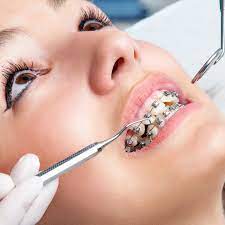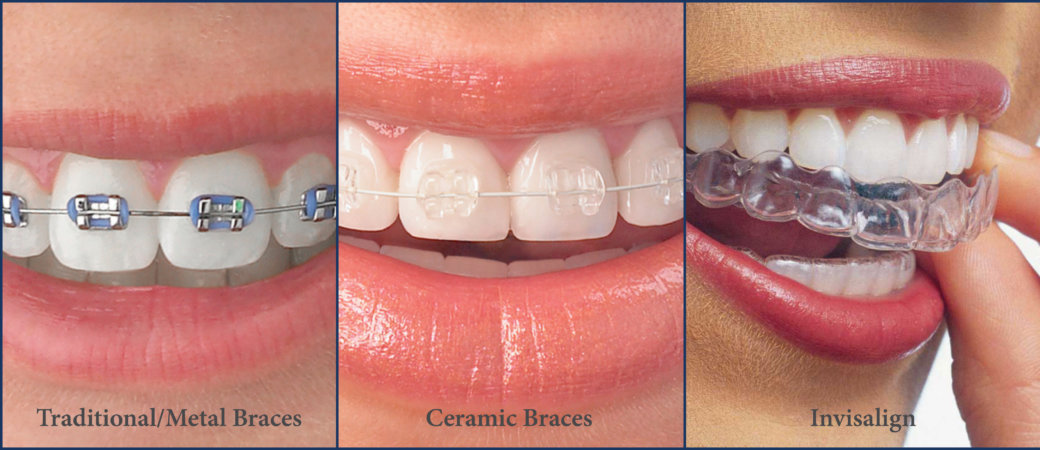Facts About Causey Orthodontics Revealed
Facts About Causey Orthodontics Revealed
Blog Article
The Ultimate Guide To Causey Orthodontics
Table of ContentsCausey Orthodontics Things To Know Before You Get ThisNot known Details About Causey Orthodontics The Ultimate Guide To Causey OrthodonticsThe 3-Minute Rule for Causey OrthodonticsGet This Report on Causey Orthodontics
Overlooking occlusal connections, it was regular to get rid of teeth for a selection of oral concerns, such as malalignment or congestion. The idea of an intact dentition was not extensively valued in those days, making bite relationships seem pointless. In the late 1800s, the principle of occlusion was crucial for creating dependable prosthetic substitute teeth.As these principles of prosthetic occlusion progressed, it became an invaluable tool for dental care. It remained in 1890 that the work and effect of Dr. Edwards H. Angle started to be really felt, with his contribution to modern orthodontics especially significant. Initially concentrated on prosthodontics, he educated in Pennsylvania and Minnesota before guiding his focus towards oral occlusion and the therapies needed to keep it as a normal problem, thus becoming understood as the "father of modern orthodontics".

The concept of ideal occlusion, as proposed by Angle and integrated into a category system, made it possible for a change towards treating malocclusion, which is any type of inconsistency from normal occlusion. Having a complete set of teeth on both arches was very searched for in orthodontic therapy as a result of the need for exact connections between them.
More About Causey Orthodontics
As occlusion became the key top priority, face proportions and appearances were overlooked - affordable orthodontist near me. To attain excellent occlusals without using external forces, Angle proposed that having best occlusion was the very best way to gain maximum facial aesthetic appeals. With the passing away of time, it became fairly apparent that even a remarkable occlusion was not ideal when taken into consideration from a visual factor of view
Charles Tweed in America and Raymond Begg in Australia (that both studied under Angle) re-introduced dental care extraction into orthodontics during the 1940s and 1950s so they can improve facial esthetics while additionally guaranteeing far better security concerning occlusal connections. In the postwar duration, cephalometric radiography begun to be utilized by orthodontists for determining modifications in tooth and jaw placement triggered by development and therapy. It became obvious that orthodontic therapy could readjust mandibular development, resulting in the formation of functional jaw orthopedics in Europe and extraoral pressure steps in the United States. Nowadays, both useful home appliances and extraoral gadgets are used around the globe with the goal of amending growth patterns and types. Consequently, going after true, or a minimum of boosted, jaw partnerships had actually ended up being the primary purpose of therapy by the mid-20th century.
Excitement About Causey Orthodontics
 Till the mid-1970s, dental braces were made by wrapping steel around each tooth. https://gifyu.com/causeyortho7., it ended up being possible to rather bond metal braces to the teeth.
Till the mid-1970s, dental braces were made by wrapping steel around each tooth. https://gifyu.com/causeyortho7., it ended up being possible to rather bond metal braces to the teeth.Andrews gave an informative definition of the excellent occlusion in long-term teeth. This has had purposeful effects on orthodontic therapies that are administered regularly, and these are: 1. Correct interarchal connections 2. Right crown angulation (pointer) 3. Correct crown inclination (torque) 4. No turnings 5. Limited contact points 6. Flat Contour of Spee (0.02.5 mm), and based upon these concepts, he discovered a therapy system called the straight-wire appliance system, or the pre-adjusted edgewise system.
The advantage of the layout hinges on its brace and archwire combination, which calls for only marginal cable bending from the orthodontist or clinician (best orthodontist near me). It's aptly named after this function: the angle of the slot and density of the bracket base ultimately determine where each tooth is located with little requirement for added control
The 7-Minute Rule for Causey Orthodontics
Both of these systems used identical brackets for each and every tooth and required the bending of an archwire in 3 planes for locating teeth in their preferred settings, with these bends dictating utmost positionings. When it comes to orthodontic appliances, they are separated into two types: removable and dealt with. Removable home appliances can be taken on and off by the person as called for.

Therefore, nearly all modern-day set devices can be thought about variants on this edgewise home appliance system. Early 20th-century orthodontist Edward Angle made a significant contribution to the world of dentistry. He developed four distinct home appliance systems that have been utilized as the basis for numerous orthodontic therapies today, barring a few exemptions.
Our Causey Orthodontics PDFs

The cable ended in a thread, and to relocate forward, an adjustable nut was utilized, which permitted a boost in area. By ligation, each specific tooth was affixed to this expansive archwire (cheapest orthodontist near me). As a result of its limited variety of motion, Angle was incapable to achieve specific tooth placing with an E-arch
These tubes held a firm pin, which could be repositioned at each appointment in order to move them in position. Dubbed the "bone-growing appliance", this gizmo was supposed to encourage healthier bone development as a result of its capacity for transferring force directly to the roots. However, applying it proved bothersome actually.
Report this page